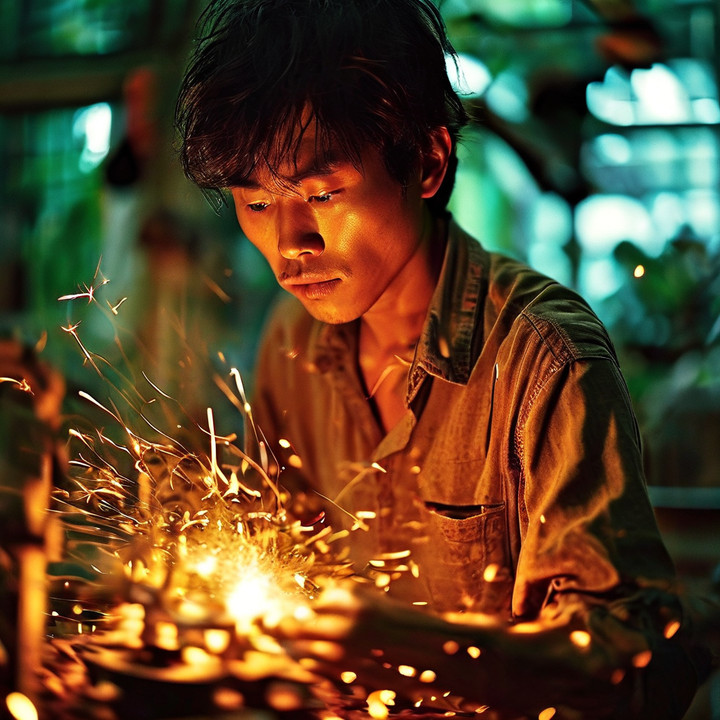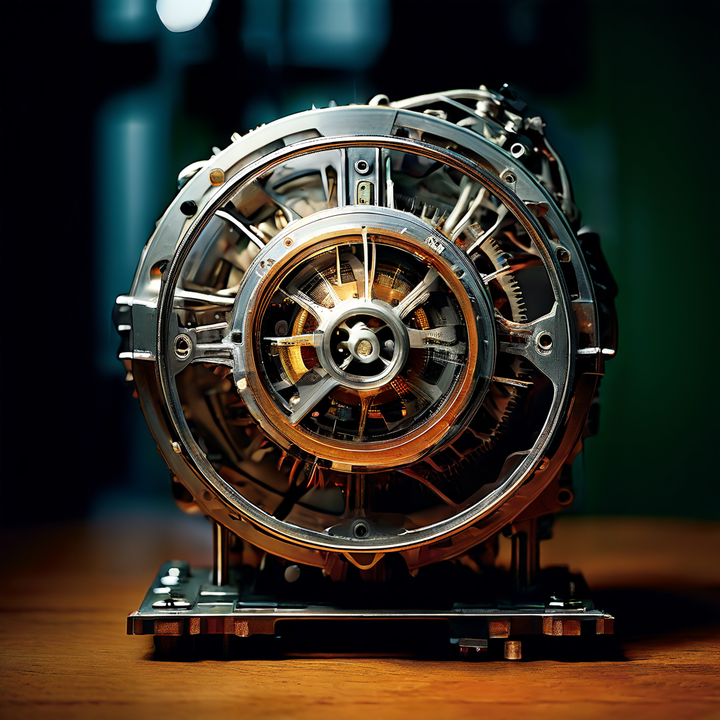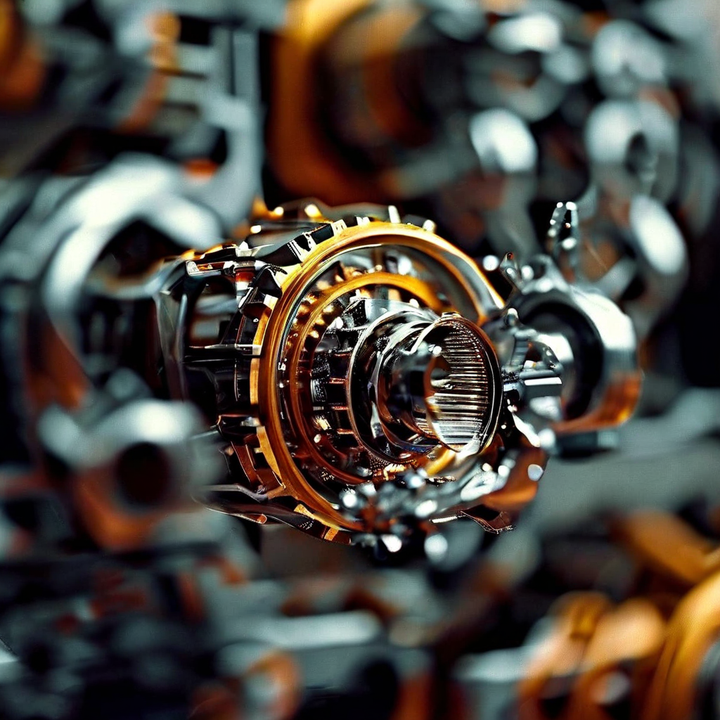


Mechanical energy is a fundamental concept in physics that describes the energy associated with the motion and position of objects. It is a form of energy that governs the behavior of many physical systems, from the motion of planets to the operation of machines and vehicles.
In this article, I'll take you on a journey through the captivating realm of mechanical energy, exploring its various forms, its applications, and the principles that govern its behavior. Buckle up, because we're about to delve into the heart of what makes machines tick!

Have you ever watched a car zooming down the highway or a baseball soaring through the air? That's kinetic energy in action – the energy possessed by an object due to its motion. As a mechanic, I deal with kinetic energy on a daily basis, whether it's the spinning wheels of a vehicle or the whirring blades of a turbine.
The amount of kinetic energy an object possesses depends on two key factors:
| Factor | Description |
|---|---|
| Mass | The heavier an object is, the more kinetic energy it carries. |
| Speed | The faster an object moves, the more kinetic energy it possesses. |
This relationship is beautifully captured by the kinetic energy formula:
$$K = \frac{1}{2}mv^2$$
Where K represents the kinetic energy, m is the mass of the object, and v is its speed.
Imagine a massive truck barreling down the road – its sheer weight and velocity combine to create an immense amount of kinetic energy. On the other hand, a feather floating in the breeze has negligible kinetic energy due to its low mass and speed.
While kinetic energy is all about motion, potential energy is the energy an object possesses due to its position or configuration. It's like a coiled spring, ready to unleash its stored energy at any moment.
One of the most familiar forms of potential energy is gravitational potential energy. Have you ever lifted a heavy toolbox or hoisted an engine block? The higher you lift an object against the pull of gravity, the more gravitational potential energy it accumulates. This energy is given by the formula:
$$U = mgh$$
Where U represents the gravitational potential energy, m is the mass of the object, g is the acceleration due to gravity, and h is the height above the surface.
But potential energy isn't limited to gravity alone. Elastic materials like springs and rubber bands also store potential energy when they're stretched or compressed. This elastic potential energy is what powers many mechanical devices, from simple toys to complex machinery.
| Type of Potential Energy | Description |
|---|---|
| Gravitational Potential Energy | Energy due to an object's vertical position or height above the Earth's surface. |
| Elastic Potential Energy | Energy stored in elastic materials like springs or rubber bands when they are stretched or compressed. |
Now, here's where things get really interesting. The total mechanical energy of an object is the sum of its kinetic and potential energies:
$$E_\text{mechanical} = K + U$$
This principle is at the heart of countless mechanical systems, from the simplest lever to the most advanced engines. It's what allows us to transfer energy between different forms, harnessing the power of motion and stored potential to do work.
Imagine a pendulum swinging back and forth. At its highest point, it has maximum potential energy but no kinetic energy. As it descends, the potential energy is gradually converted into kinetic energy, reaching its peak velocity at the bottom of the swing. Then, the process reverses as the kinetic energy is transformed back into potential energy, and the cycle continues.
One of the most fascinating aspects of mechanical energy is the principle of conservation of mechanical energy. This principle states that if only conservative forces (like gravity and spring forces) act on an object, its total mechanical energy remains constant.
In an ideal world, without friction or other non-conservative forces, mechanical energy would be perfectly conserved, flowing seamlessly between kinetic and potential forms. However, in the real world, we have to contend with energy dissipation due to factors like friction, which can cause mechanical energy to be lost as heat.
As mechanics, our job is to minimize these energy losses and ensure that mechanical systems operate as efficiently as possible. We design lubrication systems, optimize moving parts, and implement energy-saving measures to maximize the conservation of mechanical energy.
The applications of mechanical energy are vast and diverse, spanning countless industries and fields. Here are some examples:

Automotive industry: Mechanical energy is at the heart of every vehicle's operation, from the combustion of fuel in the engine to the transfer of kinetic energy through the drivetrain to the wheels.
Power generation: Hydroelectric dams harness the potential energy of water, while wind turbines capture the kinetic energy of the wind to produce renewable power.
Manufacturing: Mechanical energy powers various machines and processes in manufacturing plants.
Household appliances: Everyday appliances like washing machines and blenders rely on mechanical energy to function.
| Industry | Application |
|---|---|
| Automotive | Engines, drivetrains, brakes |
| Power Generation | Hydroelectric dams, wind turbines |
| Manufacturing | Machines, processes |
| Household | Appliances like washing machines, blenders |
As I reflect on the fascinating world of mechanical energy, I'm reminded of the incredible ingenuity and creativity that have gone into harnessing and utilizing this fundamental force. From the earliest simple machines to the most cutting-edge technologies, mechanical energy has been the driving force behind human progress and innovation.
As a mechanic, it's my job to understand, maintain, and optimize the systems that harness mechanical energy, ensuring that they operate efficiently and reliably. But beyond the technical aspects, there's a certain beauty and elegance in the way mechanical energy flows and transforms, constantly adapting to the demands of the task at hand.
So, the next time you see a machine in motion or witness the power of a mechanical system, take a moment to appreciate the intricate dance of kinetic and potential energies that make it all possible. Who knows, you might just find yourself as captivated by the world of mechanical energy as I am.
Kinetic energy is the energy of motion, while potential energy is the stored energy an object possesses due to its position or configuration.
No, according to the law of conservation of energy, mechanical energy cannot be created or destroyed, only transformed from one form to another.
The amount of kinetic energy depends on the mass and speed of the object - heavier objects and faster-moving objects have more kinetic energy.
The formula for gravitational potential energy is U = mgh, where m is mass, g is acceleration due to gravity, and h is height.
Elastic potential energy is the energy stored in elastic materials like springs or rubber bands when they are stretched or compressed.
In the presence of friction, which is a non-conservative force, some mechanical energy is dissipated as heat and the total mechanical energy is not conserved.
Hydroelectric dams harness the potential energy of water, while wind turbines capture the kinetic energy of wind to generate electricity.
The principle states that if only conservative forces act on an object, its total mechanical energy remains constant as it is transferred between kinetic and potential forms.
A mechanic's role is to understand, maintain, and optimize mechanical systems to minimize energy losses and ensure efficient operation.
Yes, mechanical energy can be converted into other forms like electrical energy in generators, thermal energy through friction, or sound energy from vibrations.

Sarah isn't your average gearhead. With a double major in Mechanical Engineering and Automotive Technology, she dived straight into the world of car repair. After 15 years of turning wrenches at dealerships and independent shops, Sarah joined MICDOT to share her expertise and passion for making cars run like new. Her in-depth knowledge and knack for explaining complex issues in simple terms make her a valuable asset to our team.




